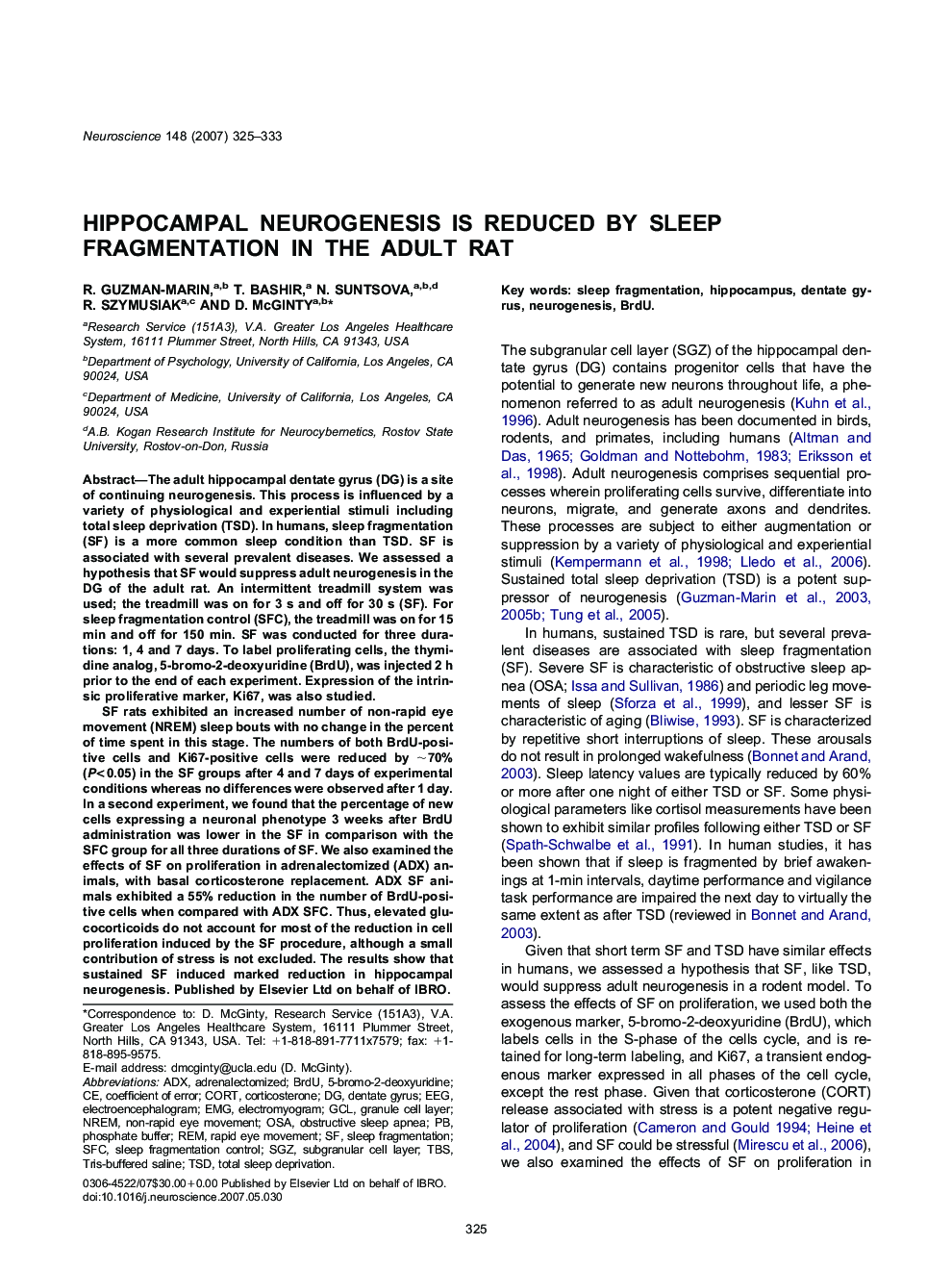| Article ID | Journal | Published Year | Pages | File Type |
|---|---|---|---|---|
| 6278663 | Neuroscience | 2007 | 9 Pages |
Abstract
SF rats exhibited an increased number of non-rapid eye movement (NREM) sleep bouts with no change in the percent of time spent in this stage. The numbers of both BrdU-positive cells and Ki67-positive cells were reduced by â¼70% (P<0.05) in the SF groups after 4 and 7 days of experimental conditions whereas no differences were observed after 1 day. In a second experiment, we found that the percentage of new cells expressing a neuronal phenotype 3 weeks after BrdU administration was lower in the SF in comparison with the SFC group for all three durations of SF. We also examined the effects of SF on proliferation in adrenalectomized (ADX) animals, with basal corticosterone replacement. ADX SF animals exhibited a 55% reduction in the number of BrdU-positive cells when compared with ADX SFC. Thus, elevated glucocorticoids do not account for most of the reduction in cell proliferation induced by the SF procedure, although a small contribution of stress is not excluded. The results show that sustained SF induced marked reduction in hippocampal neurogenesis.
Keywords
TSDadrenalectomizedSGZ5-bromo-2-deoxyuridineREMADXNREMGCLSFCTBSobstructive sleep apneaElectroencephalogramEMGelectromyogramphosphate bufferOsaBrdUTris-buffered salinerapid eye movementnon-rapid eye movementdentate gyruscoefficient of errorsleep fragmentationgranule cell layerTotal sleep deprivationEEGNeurogenesisHippocampusCORTCorticosterone
Related Topics
Life Sciences
Neuroscience
Neuroscience (General)
Authors
R. Guzman-Marin, T. Bashir, N. Suntsova, R. Szymusiak, D. McGinty,
